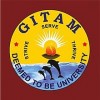Assistant Manager F
10+ Assistant Manager F Interview Questions and Answers
Asked in Deepak Impex

Q. What challenges do you face when finalizing the balance sheet?
Challenges in finalizing the balance sheet include reconciling accounts, identifying errors, and ensuring accuracy.
Reconciling accounts to ensure all transactions are accurately recorded
Identifying and correcting errors in the financial statements
Ensuring accuracy in the balance sheet by verifying all figures and calculations
Dealing with complex transactions or unusual accounting entries
Coordinating with different departments to gather necessary information
Asked in Deepak Impex

Q. How Much type of GST ? how much type of GST return ?
There are three types of GST in India - CGST, SGST, and IGST. There are multiple types of GST returns depending on the nature of the taxpayer.
Types of GST in India: CGST (Central Goods and Services Tax), SGST (State Goods and Services Tax), IGST (Integrated Goods and Services Tax)
Types of GST returns: GSTR-1 (Outward supplies), GSTR-3B (Summary return), GSTR-9 (Annual return)
Different types of GST returns for different categories of taxpayers like regular taxpayers, compositi...read more
Asked in Deepak Impex

Q. What is advance tax working ? how will you ensure the correctness of that ?
Advance tax working involves estimating and paying taxes in advance to avoid penalties.
Advance tax is paid in installments throughout the year based on estimated income.
It helps taxpayers avoid penalties for underpayment at the end of the year.
To ensure correctness, accurate income projections and tax calculations are essential.
Regular monitoring of income and tax liabilities is necessary to make adjustments if needed.
Asked in Deepak Impex

Q. Which accounting policies are currently applicable in your current company?
The current accounting policy in my company is the FIFO (First In, First Out) method.
FIFO method is used to value inventory by assuming that the first items purchased are the first items sold.
This method is commonly used in industries where products have a limited shelf life, such as food and beverage.
FIFO helps in ensuring that older inventory is sold first, reducing the risk of obsolescence.
It also provides a more accurate representation of the cost of goods sold and ending...read more
Asked in Deepak Impex

Q. What is Form 26AS and why should we reconcile it?
26 AS is a consolidated tax statement that provides details of tax deducted at source, advance tax paid, and self-assessment tax paid.
26 AS is issued by the Income Tax Department to taxpayers.
It helps in verifying if the taxes deducted by the deductor have been deposited with the government.
Reconciliation of 26 AS is important to ensure accurate filing of income tax returns.
It also helps in identifying any discrepancies or errors in tax payments.
For example, if an employer ha...read more

Asked in Genpact

Q. AP cycle How one should act on a vendor details change request?
Act promptly and accurately on vendor details change requests to ensure accurate accounts payable processing.
Verify the authenticity of the request and the vendor details provided
Update the vendor details in the system accurately and promptly
Communicate the changes to relevant departments such as accounts payable and procurement
Ensure proper documentation of the change request and any approvals obtained
Monitor future transactions to ensure the updated vendor details are being...read more
Assistant Manager F Jobs



Asked in Deepak Impex

Q. What is OCI ? what is CAS-4 Stand for ?
OCI stands for Other Comprehensive Income. CAS-4 stands for Cost Accounting Standard 4.
OCI refers to items that are not included in net income but are instead shown in the equity section of the balance sheet.
CAS-4 is a standard that deals with the cost of production for captive consumption.
OCI can include items such as unrealized gains or losses on investments, foreign currency translation adjustments, and pension adjustments.
CAS-4 helps in determining the cost of production ...read more

Asked in Wow Momo Foods

Q. What is the profile of an F&B Auditor?
F&B Auditor is responsible for conducting audits on food and beverage operations to ensure compliance with regulations and standards.
Conduct audits on food and beverage operations
Ensure compliance with regulations and standards
Analyze financial records and inventory levels
Identify areas for improvement in cost control and efficiency
Provide recommendations for enhancing operations
Share interview questions and help millions of jobseekers 🌟


Asked in TCS

Q. What is your expected CTC?
My expected CTC is in line with industry standards and commensurate with my experience and skills.
I have researched the market and have a good understanding of the salary range for this position.
I am open to negotiation based on the overall compensation package, including benefits and opportunities for growth.
Based on my experience and skills, I am looking for a salary range of X to Y.
I am willing to discuss my expected CTC further during the interview process.

Asked in GITAM University

Q. What is the full form of MIS?
MIS stands for Management Information System, which is a computer-based system that provides managers with tools to organize, evaluate, and efficiently manage departments within an organization.
MIS helps in decision-making by providing timely and accurate information
It helps in planning, controlling, and organizing resources
Examples of MIS include software like ERP systems, CRM systems, and data analytics tools

Asked in Genpact

Q. How do you validate invoices?
Validating invoices involves checking for accuracy and authenticity.
Verify that the invoice matches the purchase order and delivery receipt
Check for correct pricing, quantities, and calculations
Ensure that the invoice includes all necessary information such as vendor details and payment terms
Confirm that the invoice is approved by the appropriate personnel
Perform a three-way match between the purchase order, invoice, and receipt
Use software tools like OCR to automate the vali...read more

Asked in GITAM University

Q. Explain TDS, its sections, and rates.
TDS stands for Tax Deducted at Source. It is a tax collection method where a certain percentage of tax is deducted by the payer at the time of making payment.
TDS is applicable on various incomes such as salary, interest, commission, rent, etc.
Different sections of the Income Tax Act specify the rates at which TDS is to be deducted.
For example, TDS on salary is deducted under Section 192 at rates specified by the government.
TDS rates can vary based on the nature of payment and...read more

Asked in QX Global Group

Q. Sales tax rates and payroll definitions
Sales tax rates and payroll definitions
Sales tax rates vary by state and can also differ by county or city
Payroll definitions include gross pay, net pay, deductions, and taxes
Employers are responsible for withholding and remitting payroll taxes to the government

Asked in Genpact

Q. Golden rules of accounting
Golden rules of accounting are basic principles that guide the process of recording financial transactions.
There are three golden rules of accounting: Debit what comes in, Credit what goes out, Debit the receiver, Credit the giver, Debit expenses and losses, Credit income and gains.
These rules help maintain the balance in the accounting equation: Assets = Liabilities + Equity.
For example, when a company receives cash from a customer, it will debit the cash account (what comes...read more

Asked in Exl India

Q. GL entries and their impact
GL entries are journal entries that record financial transactions and their impact on the company's accounts.
GL entries are used to record transactions such as sales, purchases, and expenses.
They impact the company's financial statements, including the balance sheet, income statement, and cash flow statement.
GL entries must be accurate and timely to ensure the financial statements are reliable.
Examples of GL entries include recording a sale, recording a payment to a vendor, a...read more

Asked in Jbm Auto Components

Q. Ratio Analysis of financial
Ratio analysis evaluates financial performance using key metrics to assess profitability, liquidity, and solvency.
Profitability Ratios: Measure a company's ability to generate profit. Example: Net Profit Margin = Net Income / Revenue.
Liquidity Ratios: Assess a company's ability to meet short-term obligations. Example: Current Ratio = Current Assets / Current Liabilities.
Solvency Ratios: Evaluate long-term financial stability. Example: Debt to Equity Ratio = Total Debt / Total...read more
Interview Experiences of Popular Companies






Calculate your in-hand salary
Confused about how your in-hand salary is calculated? Enter your annual salary (CTC) and get your in-hand salary


Reviews
Interviews
Salaries
Users










